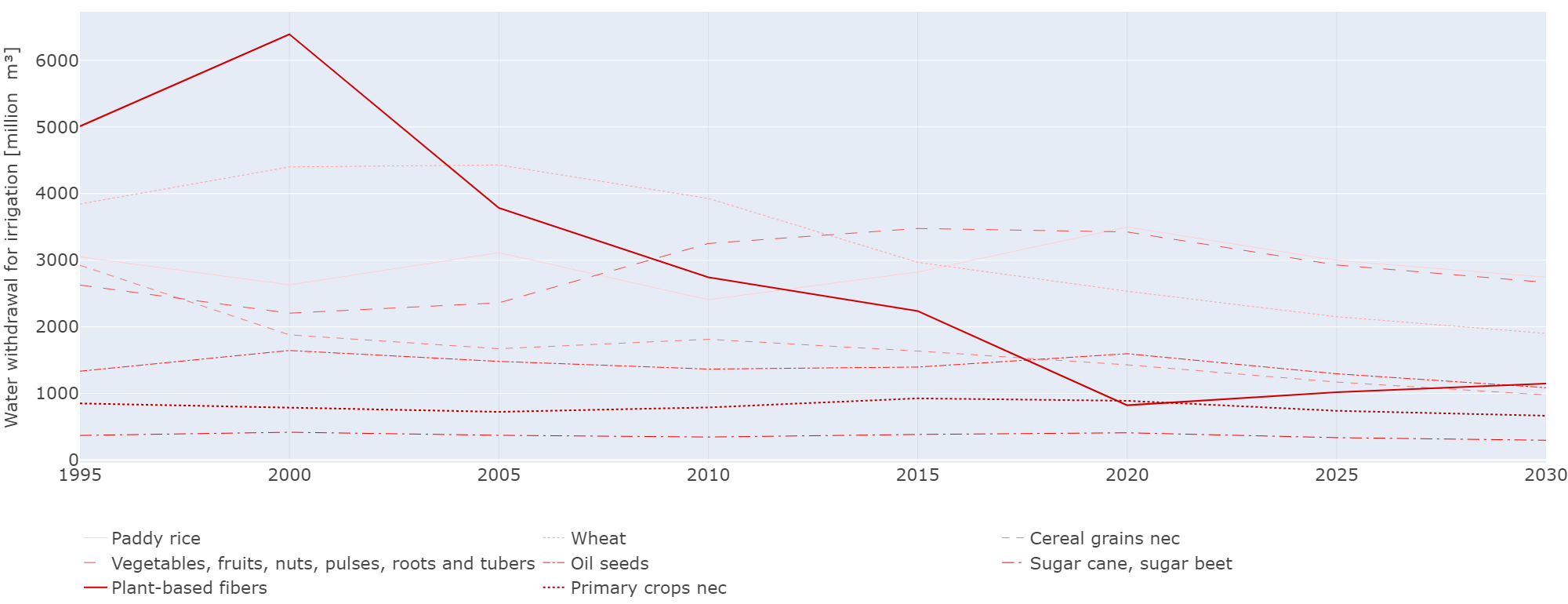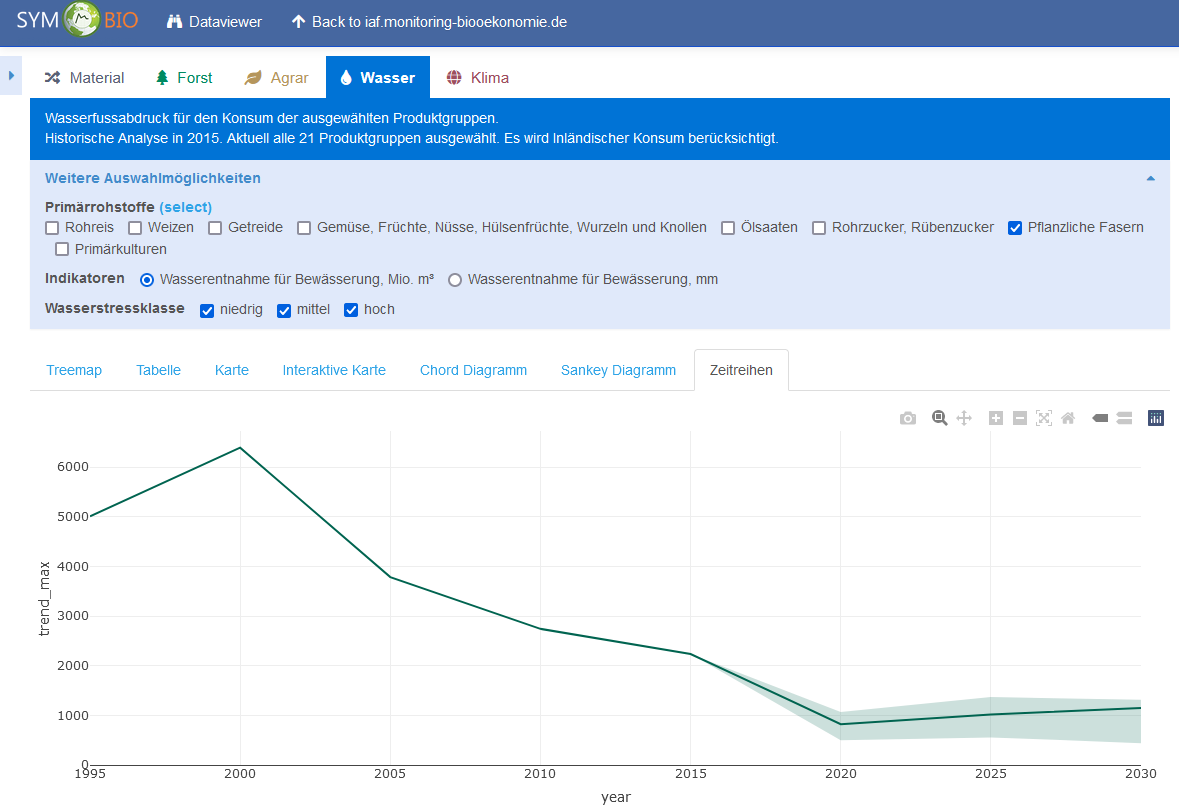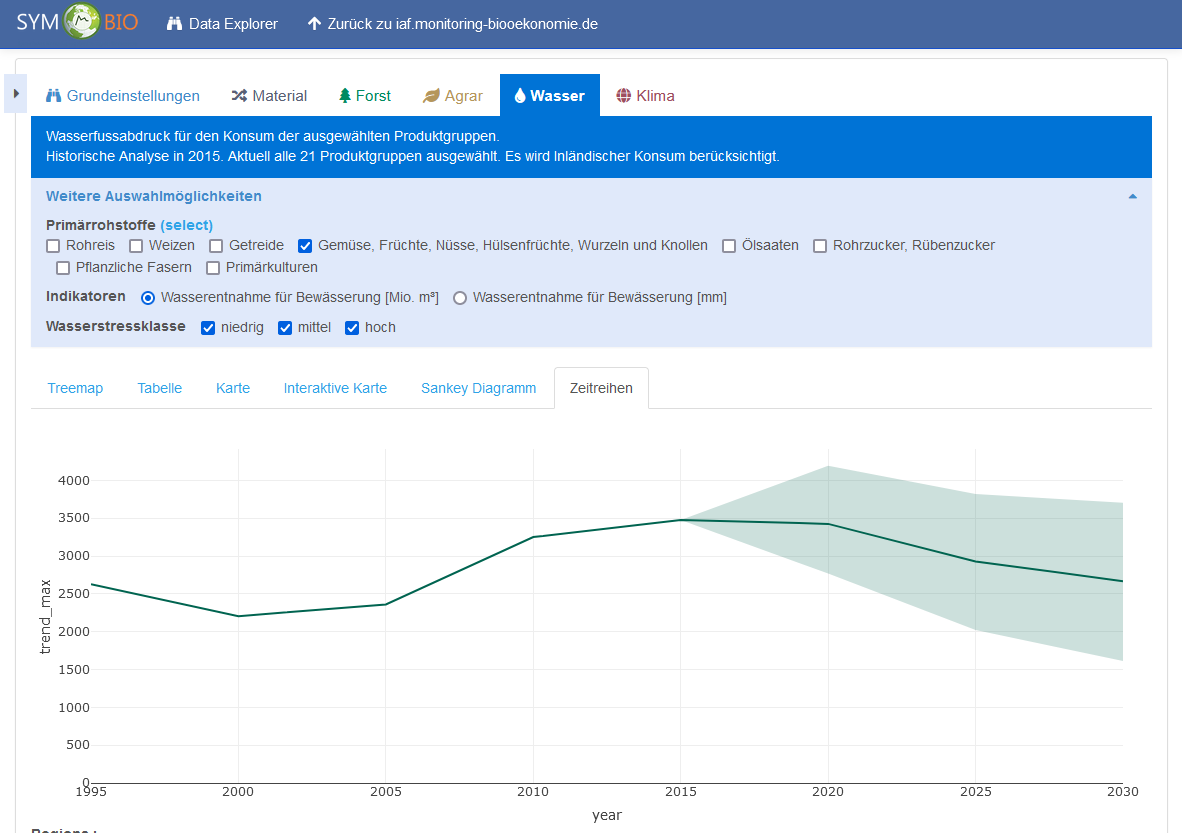Figure 1: Development of Germany's water footprint by crop class.
Looking at the irrigation effort for the different crops consumed in Germany since 1995, two trends stand out.
- The water footprint of the cotton consumed in Germany has decreased significantly. This is due to a sharp decline in imports and an increasing share of imports from reference regions with lower water use per quantity of cotton produced.
Exploring the data in the Data Explorer
- In the period 2000-2015, the water footprint of vegetables, fruits and nuts consumed in Germany has increased by 60%.
Exploring the data in the Data Explorer
It is expected, due to changing consumption patterns, that from 2020 to 2030 a decreasing trend will start for most crops, leading to reductions of 22% (rice, vegetables, fruits and nuts) up to 35% (oil palm products). Trends from 2020 suggest increasing water footprints for cotton (+40%) and other fiber crops (+3%).









